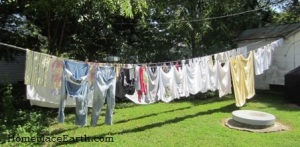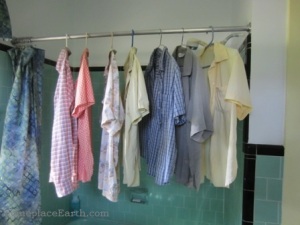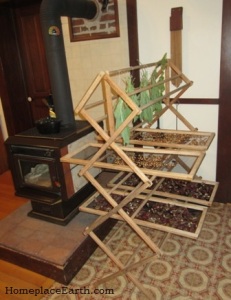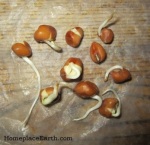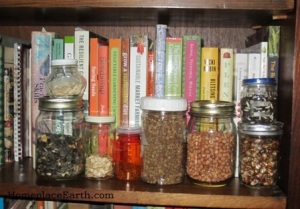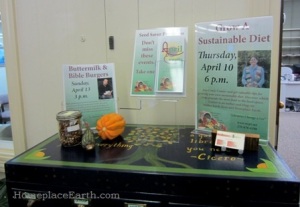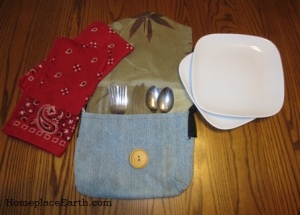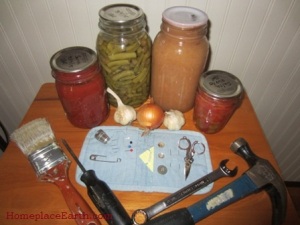 After many years of rarely hearing the term, I have seen “home economics” pop up recently here and there. That might be due to the DIY movement going on. It catches my attention because that was my major at Ohio State University. In 1975 I received a degree in Home Economics Education. When I started on that path my intention was to be a cooperative extension agent and help people be more productive at home. However, by the time I graduated I had already married my college sweetheart and our first child was two. It had been an eventful six years since high school graduation.
After many years of rarely hearing the term, I have seen “home economics” pop up recently here and there. That might be due to the DIY movement going on. It catches my attention because that was my major at Ohio State University. In 1975 I received a degree in Home Economics Education. When I started on that path my intention was to be a cooperative extension agent and help people be more productive at home. However, by the time I graduated I had already married my college sweetheart and our first child was two. It had been an eventful six years since high school graduation.
My husband and I chose to start our family early and live on one income. When our first child was born I stayed home and put everything I learned in my college classes to good use. We had to watch our pennies carefully. Home economics education involved classes in clothing and textiles, food and nutrition, housing and home furnishings, family and child development, and education. At Ohio State I attended the School of Home Economics within the College of Agriculture. By the time I graduated classes in consumerism were being added. Now if I wanted to be an extension agent, rather than a Home Economics agent, I would be Family and Consumer Sciences agent and would attend the College of Education and Human Ecology at Ohio State.
I did end up becoming active with extension as a volunteer. I was a 4-H leader with my children for many years and the county office gave my number out frequently when people called in with questions about organic gardening, school gardens, composting with worms, and hatching baby chicks. That helped prompt me to become a teacher at the local community college, since there was a need for adult education. Gardening was not part of my curriculum at Ohio State, but was a natural extension of providing my family with good nutrition. I had studied everything I could find about organic gardening and put it to use, just like my other education.
No matter what education we have, we can make the life we want. I learned to sew as a young 4-Her, so by the time I was in college I already had skills and even made my wedding dress. My arms and legs are longer than most. Learning to sew was a way for me to have clothes that fit—also, I don’t like to shop. I made our children’s clothes while they were growing up, saving the fabric scraps, which eventually led me to take up quilting. When we make the life we want, we have the opportunity to do things and to have things that we can’t get elsewhere. You could even make your own blue jeans, which is what I’ve been doing for well over thirty years now.
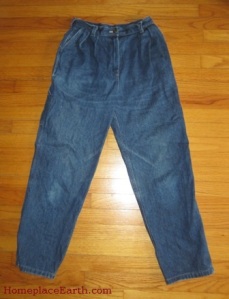 When I first started to make my own jeans I altered a store-bought pants pattern to fit like my favorite pair of store-bought jeans. If you have a favorite garment, wear it out, then cut it apart and use it as a pattern, allowing for seam allowances, of course. From patching my own jeans and those of my children, I realized that if pants were looser, the knees wouldn’t wear out so quickly. Also, if the back pockets were larger, like the ones on bib overalls, in addition to fitting more things in them, they provided an extra layer on my behind and the seat of the pants wouldn’t wear as much.
When I first started to make my own jeans I altered a store-bought pants pattern to fit like my favorite pair of store-bought jeans. If you have a favorite garment, wear it out, then cut it apart and use it as a pattern, allowing for seam allowances, of course. From patching my own jeans and those of my children, I realized that if pants were looser, the knees wouldn’t wear out so quickly. Also, if the back pockets were larger, like the ones on bib overalls, in addition to fitting more things in them, they provided an extra layer on my behind and the seat of the pants wouldn’t wear as much. 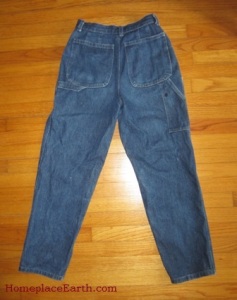 I began changing my pattern, eventually adding pleats in the front so I would have more room in my front pockets. (I really like pockets.) The front pockets are lined with the same denim as the pants. Even if I put screws in them, the pockets don’t wear out. The only problem I have with making my own jeans is finding heavy 14 oz. denim (14 oz. per square yard). I generally make two pair every two years and have to search the Internet each time, usually finding denim at Syfabrics.com. Once you know how to do something, you can change it anyway you want, and that goes for much more than clothes.
I began changing my pattern, eventually adding pleats in the front so I would have more room in my front pockets. (I really like pockets.) The front pockets are lined with the same denim as the pants. Even if I put screws in them, the pockets don’t wear out. The only problem I have with making my own jeans is finding heavy 14 oz. denim (14 oz. per square yard). I generally make two pair every two years and have to search the Internet each time, usually finding denim at Syfabrics.com. Once you know how to do something, you can change it anyway you want, and that goes for much more than clothes.
Money can’t buy a pair of jeans like this that fit me. When we hear the word economics we usually think in terms of dollars; however, home economics involves so much more than $. Even if you don’t sew, there are so many other things to do yourself in a household and on your homestead that will bring you more pleasure than anything you could buy. Any skill you can add is a plus. Learn to cook and feed your family as close to farm-to-table as you can; growing your own makes it even better. Learn to troubleshoot problems that occur and fix them yourself. Acquire tools and learn to use them.
It helps if there is more than one adult in the household. I leave the electricity and plumbing work, plus the major building projects to my husband. Some people yearn for a home theater. Not us, we have a library and a workshop. A home library may start out as a bookshelf in the living room and find a room of its own after the kids are grown, such as in our case. You can start your library by making your own bookcase, sized to fit your space.
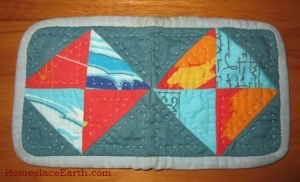 Speaking of making your own, if you are looking to make a simple homemade gift for someone, make them a sewing kit. It can be sewn entirely by hand and you could even use pieces from your old shirts to make it. In the first photo you can see one opened up. It has buttons and a safety pin for emergency repairs. The pins and needles attach to the outside of the fabric pockets. The thimble, scissors, and a card with thread wrapped around it are stored in the pockets. The whole thing folds in half. I show the outside opened up here. If you’ve always wanted to make a quilt, this could be your start. Make two small quilt squares together, fold fabric for the pockets on the other side and add binding on the edges. I gave one as a gift to someone going off to college. She told me later how handy it was when she needed to make a repair. The scissors you see in the top photo are inexpensive fold-up ones. You could jazz up yours with some fancy embroidery scissors. It is fun to make, fun to give, and fun to use.
Speaking of making your own, if you are looking to make a simple homemade gift for someone, make them a sewing kit. It can be sewn entirely by hand and you could even use pieces from your old shirts to make it. In the first photo you can see one opened up. It has buttons and a safety pin for emergency repairs. The pins and needles attach to the outside of the fabric pockets. The thimble, scissors, and a card with thread wrapped around it are stored in the pockets. The whole thing folds in half. I show the outside opened up here. If you’ve always wanted to make a quilt, this could be your start. Make two small quilt squares together, fold fabric for the pockets on the other side and add binding on the edges. I gave one as a gift to someone going off to college. She told me later how handy it was when she needed to make a repair. The scissors you see in the top photo are inexpensive fold-up ones. You could jazz up yours with some fancy embroidery scissors. It is fun to make, fun to give, and fun to use.
Tools and books are usually on the wish lists we make up at this time of year. If you have someone on your gift list who is just beginning home projects, quality hand tools and a toolbox to put them in are good gifts. If they already have some, maybe they need an upgrade. As for power tools, a drill and a circular saw are good places to start. A sewing machine and sewing classes at a fabric store are my suggestions for someone learning to sew. For the kitchen, canning jars, a water bath canner, or a pressure canner might be appropriate. My books and DVDs are great suggestions for the gardeners on your gift list. Doing things for yourself is empowering. Things might not turn out as you expect the first few times you try something new, but that’s part of the journey.
The winter solstice is coming up. I always find wonder in the change from the shortest day to the slightest bit longer. My chickens even notice. In January I’ll write about garden reports. Until then, I wish you all a Merry Christmas and a peace filled New Year.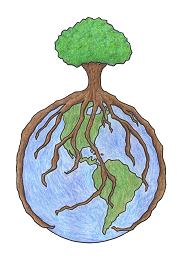
Read Full Post »
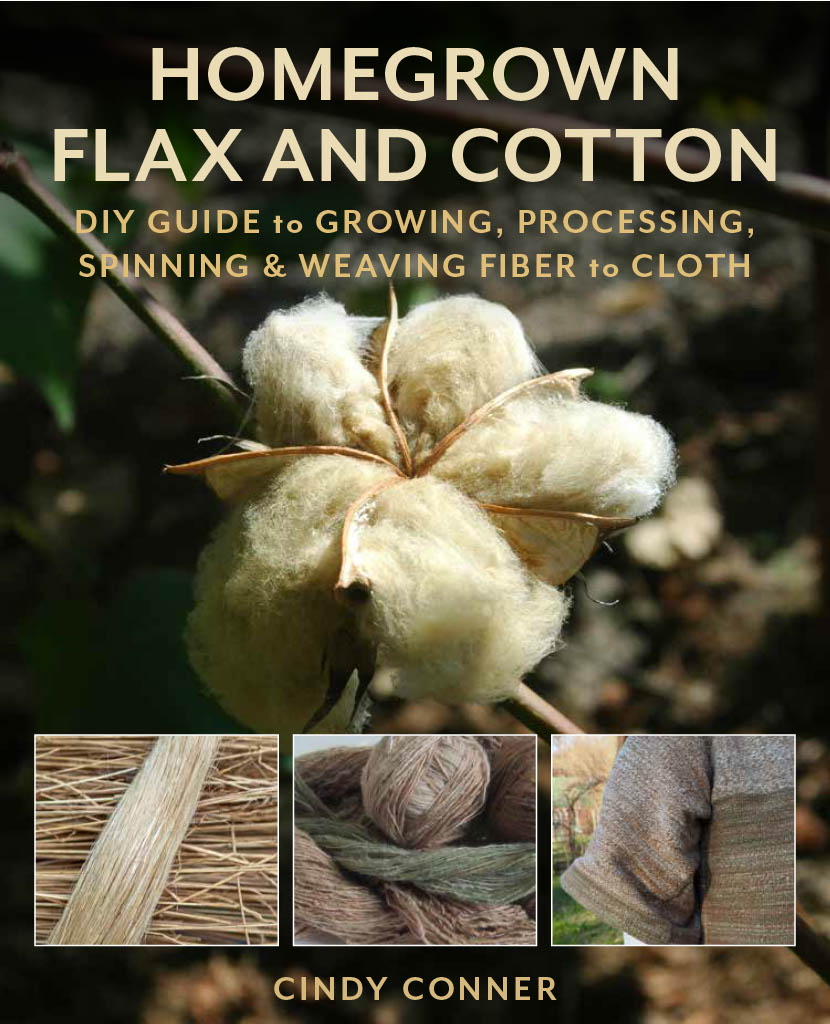
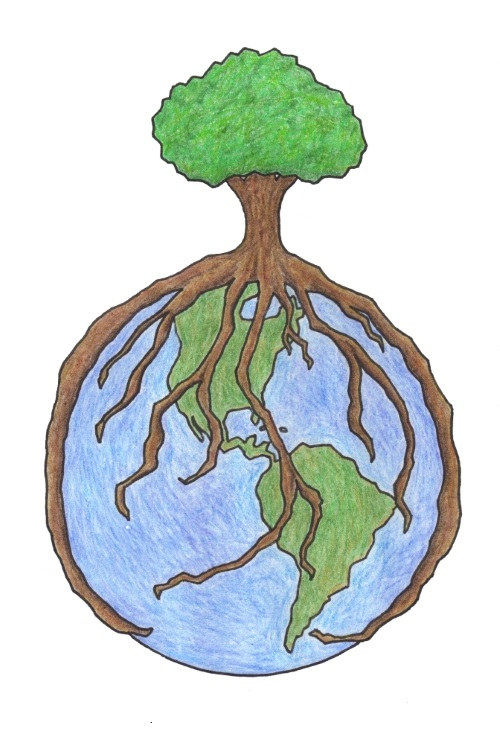
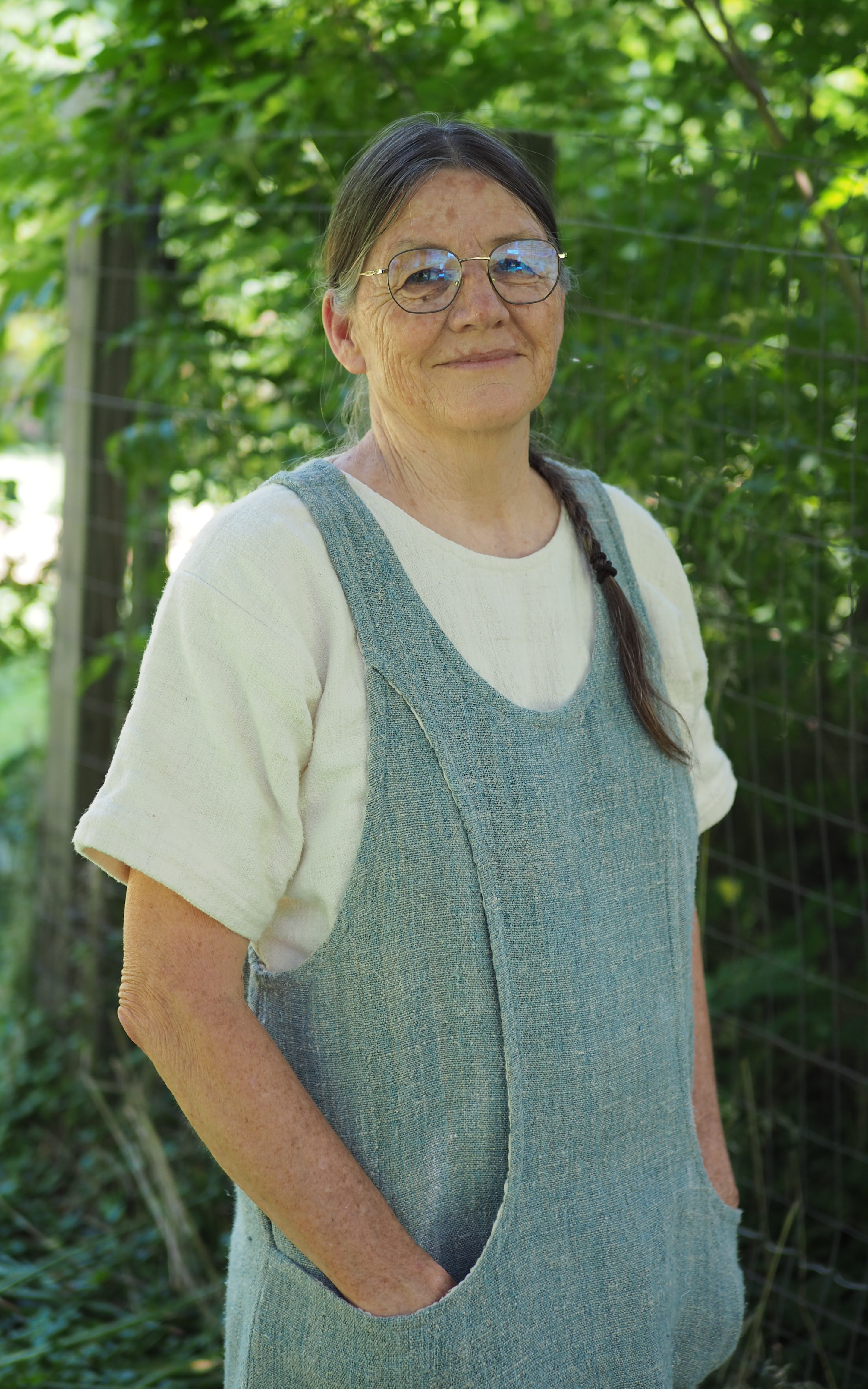
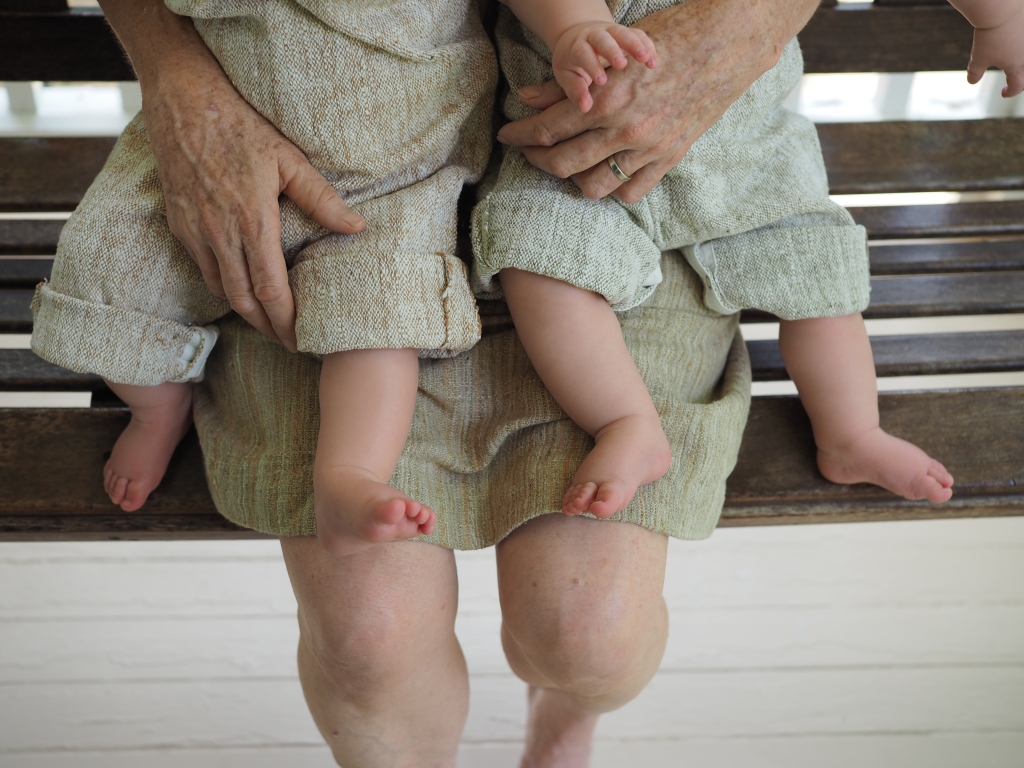

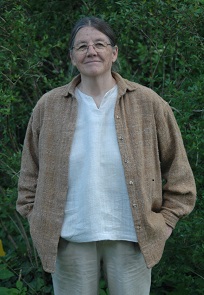
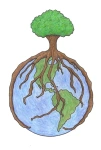

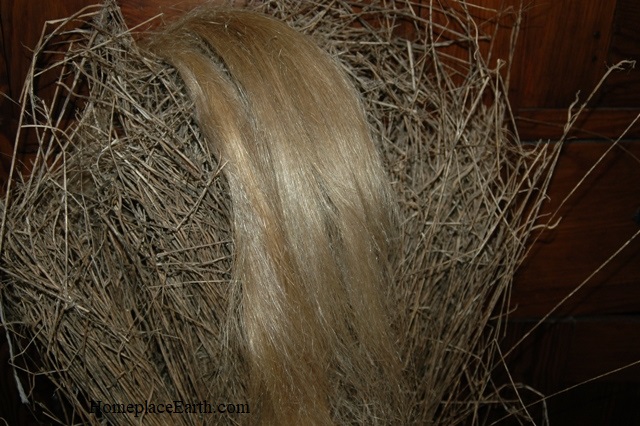
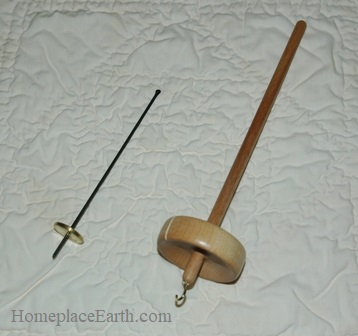
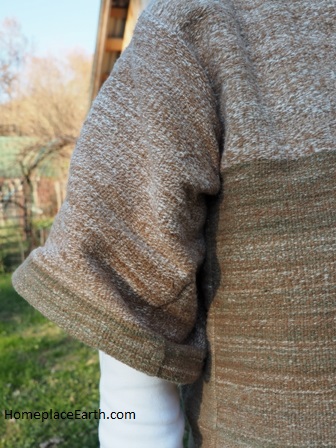
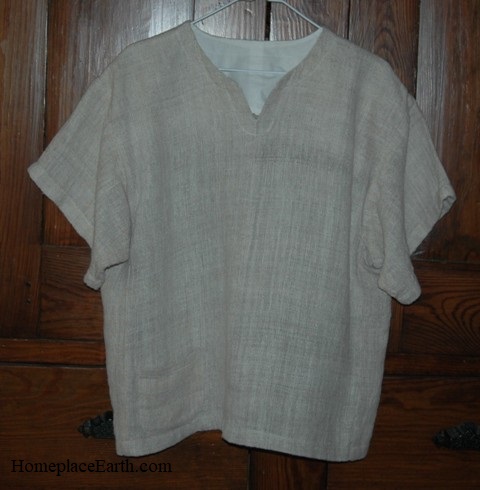





 After many years of rarely hearing the term, I have seen “home economics” pop up recently here and there. That might be due to the DIY movement going on. It catches my attention because that was my major at Ohio State University. In 1975 I received a degree in Home Economics Education. When I started on that path my intention was to be a cooperative extension agent and help people be more productive at home. However, by the time I graduated I had already married my college sweetheart and our first child was two. It had been an eventful six years since high school graduation.
After many years of rarely hearing the term, I have seen “home economics” pop up recently here and there. That might be due to the DIY movement going on. It catches my attention because that was my major at Ohio State University. In 1975 I received a degree in Home Economics Education. When I started on that path my intention was to be a cooperative extension agent and help people be more productive at home. However, by the time I graduated I had already married my college sweetheart and our first child was two. It had been an eventful six years since high school graduation. When I first started to make my own jeans I altered a store-bought pants pattern to fit like my favorite pair of store-bought jeans. If you have a favorite garment, wear it out, then cut it apart and use it as a pattern, allowing for seam allowances, of course. From patching my own jeans and those of my children, I realized that if pants were looser, the knees wouldn’t wear out so quickly. Also, if the back pockets were larger, like the ones on bib overalls, in addition to fitting more things in them, they provided an extra layer on my behind and the seat of the pants wouldn’t wear as much.
When I first started to make my own jeans I altered a store-bought pants pattern to fit like my favorite pair of store-bought jeans. If you have a favorite garment, wear it out, then cut it apart and use it as a pattern, allowing for seam allowances, of course. From patching my own jeans and those of my children, I realized that if pants were looser, the knees wouldn’t wear out so quickly. Also, if the back pockets were larger, like the ones on bib overalls, in addition to fitting more things in them, they provided an extra layer on my behind and the seat of the pants wouldn’t wear as much.  I began changing my pattern, eventually adding pleats in the front so I would have more room in my front pockets. (I really like pockets.) The front pockets are lined with the same denim as the pants. Even if I put screws in them, the pockets don’t wear out. The only problem I have with making my own jeans is finding heavy 14 oz. denim (14 oz. per square yard). I generally make two pair every two years and have to search the Internet each time, usually finding denim at Syfabrics.com. Once you know how to do something, you can change it anyway you want, and that goes for much more than clothes.
I began changing my pattern, eventually adding pleats in the front so I would have more room in my front pockets. (I really like pockets.) The front pockets are lined with the same denim as the pants. Even if I put screws in them, the pockets don’t wear out. The only problem I have with making my own jeans is finding heavy 14 oz. denim (14 oz. per square yard). I generally make two pair every two years and have to search the Internet each time, usually finding denim at Syfabrics.com. Once you know how to do something, you can change it anyway you want, and that goes for much more than clothes. Speaking of making your own, if you are looking to make a simple homemade gift for someone, make them a sewing kit. It can be sewn entirely by hand and you could even use pieces from your old shirts to make it. In the first photo you can see one opened up. It has buttons and a safety pin for emergency repairs. The pins and needles attach to the outside of the fabric pockets. The thimble, scissors, and a card with thread wrapped around it are stored in the pockets. The whole thing folds in half. I show the outside opened up here. If you’ve always wanted to make a quilt, this could be your start. Make two small quilt squares together, fold fabric for the pockets on the other side and add binding on the edges. I gave one as a gift to someone going off to college. She told me later how handy it was when she needed to make a repair. The scissors you see in the top photo are inexpensive fold-up ones. You could jazz up yours with some fancy embroidery scissors. It is fun to make, fun to give, and fun to use.
Speaking of making your own, if you are looking to make a simple homemade gift for someone, make them a sewing kit. It can be sewn entirely by hand and you could even use pieces from your old shirts to make it. In the first photo you can see one opened up. It has buttons and a safety pin for emergency repairs. The pins and needles attach to the outside of the fabric pockets. The thimble, scissors, and a card with thread wrapped around it are stored in the pockets. The whole thing folds in half. I show the outside opened up here. If you’ve always wanted to make a quilt, this could be your start. Make two small quilt squares together, fold fabric for the pockets on the other side and add binding on the edges. I gave one as a gift to someone going off to college. She told me later how handy it was when she needed to make a repair. The scissors you see in the top photo are inexpensive fold-up ones. You could jazz up yours with some fancy embroidery scissors. It is fun to make, fun to give, and fun to use.